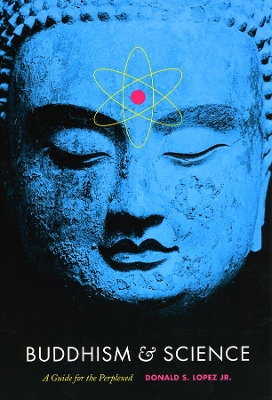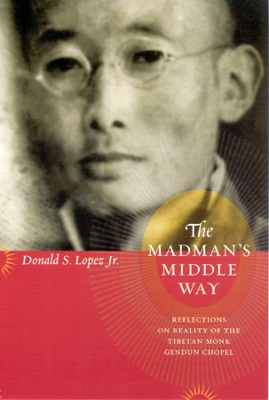Buddhism and Modernity (CHUP)
3 total works
Beginning in the nineteenth century and continuing to the present day, both practitioners and admirers of Buddhism have proclaimed its compatibility with science. In "Buddhism and Science", Donald S. Lopez Jr. explores how and why these two seemingly disparate modes of understanding the inner and outer universe have been so persistently linked. He argues that by presenting an ancient Asian tradition as compatible with - and even anticipating - scientific discoveries, European enthusiasts and Asian elites have sidestepped debates on the relevance of religion in the modern world that began in the nineteenth century and that still flare today. As new discoveries continue to reshape our understanding of mind and matter, "Buddhism and Science" will be indispensable reading for those fascinated by religion, science, and their often vexed relation.
We have come to admire Buddhism for being profound but accessible, as much a lifestyle as a religion. The credit for creating Buddhism goes to the Buddha, a figure widely respected across the Western world for his philosophical insight, his teachings of nonviolence, and his practice of meditation. But who was this Buddha, and how did he become the Buddha we know and love today? Leading historian of Buddhism Donald S. Lopez Jr. tells the story of how various idols carved in stone - variously named Beddou, Codam, Xaca, and Fo - became the man of flesh and blood that we know simply as the Buddha. He reveals that the positive view of the Buddha in Europe and America is rather recent, originating a little more than 150 years ago. For centuries, the Buddha was condemned by Western writers as the most dangerous idol of the Orient. He was a demon, the murderer of his mother, a purveyor of idolatry. Lopez provides an engaging history of depictions of the Buddha from classical accounts and medieval stories to the testimonies of European travelers, diplomats, soldiers, and missionaries.
Lopez shows that centuries of hostility toward the Buddha changed dramatically in the nineteenth century, when the teachings of the Buddha, having disappeared from India by the fourteenth century, were read by European scholars newly proficient in Asian languages. At the same time, the traditional view of the Buddha persisted in Asia, where he was revered as much for his supernatural powers as for his philosophical insights. "From Stone to Flesh" follows the twists and turns of these Eastern and Western notions of the Buddha, leading finally to his triumph as the founder of a world religion.
Lopez shows that centuries of hostility toward the Buddha changed dramatically in the nineteenth century, when the teachings of the Buddha, having disappeared from India by the fourteenth century, were read by European scholars newly proficient in Asian languages. At the same time, the traditional view of the Buddha persisted in Asia, where he was revered as much for his supernatural powers as for his philosophical insights. "From Stone to Flesh" follows the twists and turns of these Eastern and Western notions of the Buddha, leading finally to his triumph as the founder of a world religion.
Gendun Chopel is considered the most important Tibetan intellectual of the twentieth century. His life spanned the two defining moments in modern Tibetan history: the entries into Lhasa by British troops in 1904 and by Chinese troops in 1951. Recognized as an incarnate lama while he was a child, Gendun Chopel excelled in the traditional monastic curriculum and went on to become expert in fields as diverse as philosophy, history, linguistics, geography, and tantric Buddhism. Near the end of his life, before he was persecuted and imprisoned by the government of the young Dalai Lama, he would dictate the "Adornment for Nagarjuna's Thought", a work on Madhyamaka, or "Middle Way," philosophy. It sparked controversy immediately upon its publication and continues to do so today. "The Madman's Middle Way" presents the first English translation of this major work, accompanied by an essay on Gendun Chopel's life liberally interspersed with passages from his writings. Donald S. Lopez Jr. also provides a commentary that sheds light on the doctrinal context of the Adornment and summarizes its key arguments.
Ultimately, Lopez examines the long-standing debate over whether Gendun Chopel in fact is the author of the "Adornment"; the heated critical response to the work by Tibetan monks of the Dalai Lama's sect; and what the "Adornment" tells us about Tibetan Buddhism's encounter with modernity. The result is an insightful glimpse into a provocative and enigmatic work that will intrigue anyone interested in Buddhism or Asian religions.
Ultimately, Lopez examines the long-standing debate over whether Gendun Chopel in fact is the author of the "Adornment"; the heated critical response to the work by Tibetan monks of the Dalai Lama's sect; and what the "Adornment" tells us about Tibetan Buddhism's encounter with modernity. The result is an insightful glimpse into a provocative and enigmatic work that will intrigue anyone interested in Buddhism or Asian religions.


